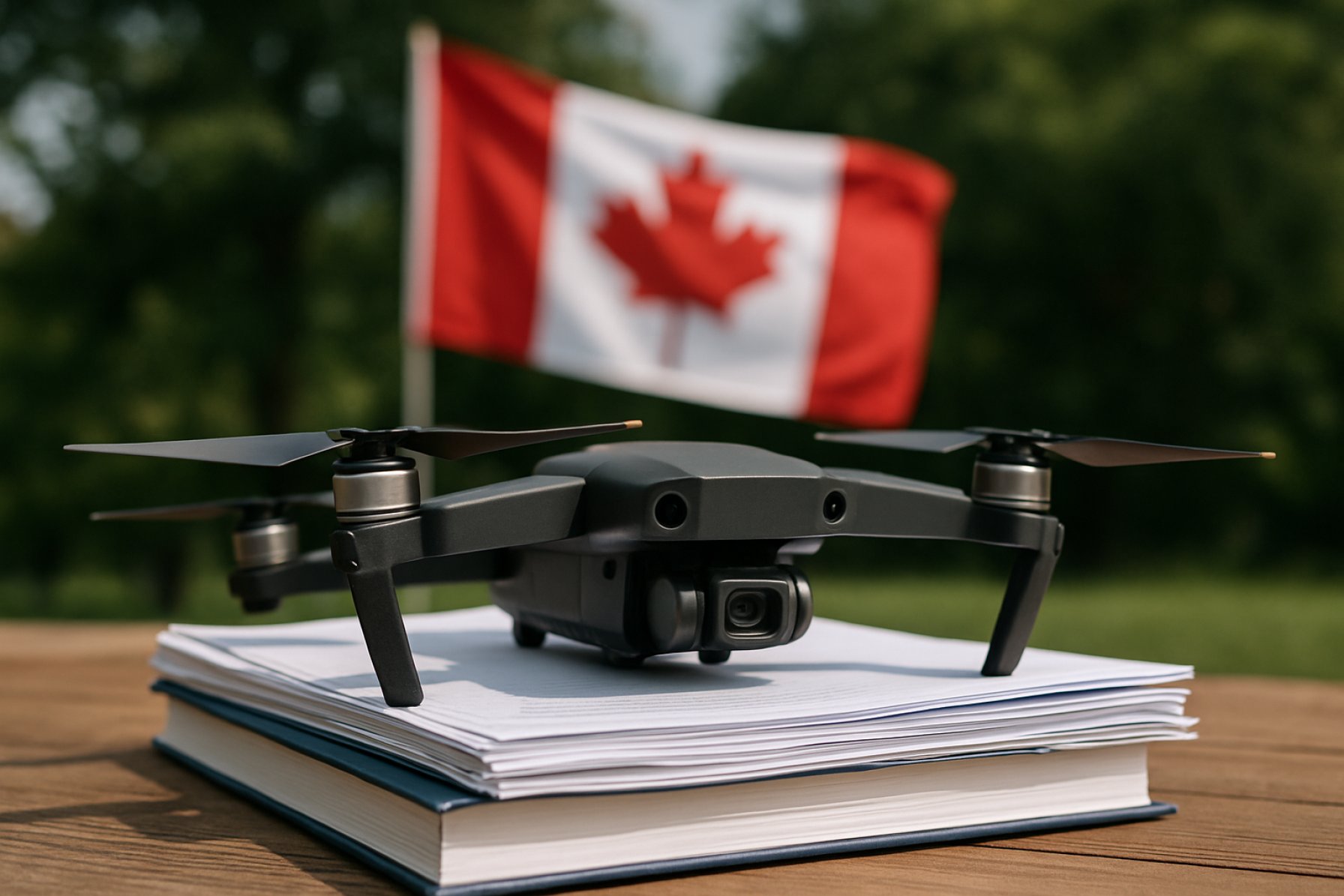Navigating Canada’s Tough Drone Laws: Essential Rules and Compliance Tips for 2025 (Flying High or Facing Fines? The Ultimate Guide to Canada’s Drone Laws (2025))
Navigating Canada’s Drone Regulations: In-Depth Industry Report and Strategic Insights
- Market Overview
- Emerging Technology Trends
- Competitive Landscape Assessment
- Growth Forecasts and Projections
- Regional Market Analysis
- Future Outlook and Strategic Directions
- Key Challenges and Opportunities
- Sources & References
Market Overview
Canada’s drone market continues to soar, driven by rapid technological advancements and expanding commercial applications. As of 2024, the Canadian drone industry is valued at over USD 1.2 billion, with projections indicating steady growth through 2025. This surge is fueled by increased adoption in sectors such as agriculture, infrastructure inspection, public safety, and media production.
However, this growth is matched by a tightening regulatory environment. Transport Canada, the federal body overseeing aviation, has implemented a comprehensive framework to ensure safety and privacy. The Canadian Aviation Regulations (CARs) Part IX governs drone operations, requiring most pilots of drones weighing between 250 grams and 25 kilograms to obtain a drone pilot certificate and register their aircraft. In 2023, over 86,000 drones were registered nationwide, a number expected to rise as commercial and recreational use expands.
Key regulatory highlights for 2025 include:
- Mandatory Registration: All drones between 250g and 25kg must be registered with Transport Canada, with unique identification numbers displayed on the aircraft.
- Pilot Certification: Operators must pass either a basic or advanced exam, depending on the intended use and proximity to bystanders or controlled airspace.
- Operational Restrictions: Drones cannot fly higher than 122 meters (400 feet) above ground level, within 5.6 kilometers (3 nautical miles) of airports, or over emergency sites without special permission.
- Fines and Enforcement: Non-compliance can result in fines up to CAD 3,000 for individuals and CAD 15,000 for corporations per infraction.
Recent updates also address privacy concerns and the integration of drones into urban airspace, with pilot projects underway in cities like Toronto and Vancouver. The government is actively consulting on advanced drone operations, including beyond visual line of sight (BVLOS) and drone delivery services, signaling a move toward more sophisticated commercial use cases in 2025.
In summary, Canada’s drone market is flying high, but operators must navigate a complex legal landscape to avoid costly fines and ensure safe, responsible flight.
Emerging Technology Trends
Canada’s drone landscape is rapidly evolving, with new technologies and stricter regulations shaping how individuals and businesses operate unmanned aerial vehicles (UAVs). As of 2025, the country is balancing innovation with public safety, making it crucial for drone operators to stay informed about the latest legal requirements and market trends.
Regulatory Overview
- Registration & Certification: All drones weighing between 250 grams and 25 kilograms must be registered with Transport Canada. Operators require a drone pilot certificate—either Basic or Advanced—depending on the intended use and proximity to people or airports (Transport Canada).
- Remote ID Mandate: In line with global trends, Canada is expected to implement mandatory Remote Identification (Remote ID) for most drones by late 2025, enabling authorities to track drones in real time and enhance airspace security (Unmanned Airspace).
- No-Fly Zones: Updated geofencing technology and stricter enforcement are in place around airports, emergency sites, and critical infrastructure. Violations can result in fines up to $25,000 for individuals and $100,000 for corporations (CBC News).
Commercial Applications & Market Growth
- Industry Expansion: The Canadian drone market is projected to reach $1.6 billion CAD by 2027, driven by applications in agriculture, mining, infrastructure inspection, and delivery services (GlobeNewswire).
- Beyond Visual Line of Sight (BVLOS): Regulatory pilots for BVLOS operations are expanding, allowing drones to fly further and automate tasks, but only with special authorization and advanced safety protocols (Transport Canada BVLOS).
Key Takeaways for 2025
- Stay updated on evolving regulations, especially Remote ID and BVLOS permissions.
- Ensure compliance to avoid steep fines and operational shutdowns.
- Leverage new technologies for competitive advantage in a growing market.
As Canada’s drone laws become more sophisticated, operators must adapt quickly to fly high—without facing fines.
Competitive Landscape Assessment
Canada’s drone market is rapidly expanding, driven by commercial, recreational, and governmental applications. As of 2024, the country has over 86,000 registered drone pilots, with the commercial drone sector projected to reach US$1.2 billion by 2025. This growth is matched by evolving regulations, making the competitive landscape both dynamic and challenging for operators and manufacturers.
- Regulatory Environment: Transport Canada is the primary regulator, enforcing the Canadian Aviation Regulations (CARs) Part IX for Remotely Piloted Aircraft Systems (RPAS). In 2024, new amendments introduced stricter requirements for advanced operations, including mandatory remote identification and expanded no-fly zones around critical infrastructure (Transport Canada).
- Market Players: The competitive field includes global giants like DJI, Parrot, and Autel Robotics, alongside Canadian firms such as Draganfly and Aeryon Labs. These companies compete on technology, compliance, and service offerings. Local startups are also emerging, focusing on niche applications like agricultural monitoring and infrastructure inspection (GlobeNewswire).
- Compliance as a Differentiator: With fines for non-compliance reaching up to CAD $15,000 for corporations, adherence to regulations is a key competitive advantage. Companies offering compliance management tools, pilot training, and regulatory consulting are gaining traction.
- Innovation and Integration: The integration of AI, real-time data analytics, and BVLOS (Beyond Visual Line of Sight) capabilities is reshaping the market. Firms that can navigate regulatory hurdles and offer advanced, compliant solutions are best positioned for growth.
- Barriers to Entry: High regulatory compliance costs, certification requirements, and insurance mandates create significant barriers for new entrants. However, government initiatives and funding for drone innovation are helping to lower some of these hurdles (Government of Canada).
In summary, Canada’s drone industry in 2025 is characterized by rapid growth, stringent regulations, and fierce competition. Success hinges on technological innovation, regulatory compliance, and the ability to adapt to an evolving legal landscape.
Growth Forecasts and Projections
Canada’s drone market is poised for significant growth, driven by expanding commercial applications, regulatory clarity, and technological advancements. According to Statista, the Canadian drone market is projected to reach US$232.6 million in revenue by 2024, with an annual growth rate (CAGR 2024-2028) of 3.47%. This growth is fueled by increased adoption in sectors such as agriculture, infrastructure inspection, and emergency services.
Transport Canada’s evolving regulatory framework is a key factor shaping the industry’s trajectory. The introduction of the 2019 drone regulations established clear requirements for pilot certification, drone registration, and operational safety. In 2025, further updates are anticipated, focusing on integrating drones into urban airspace and expanding beyond visual line-of-sight (BVLOS) operations. These changes are expected to unlock new commercial opportunities, particularly for delivery services and large-scale industrial inspections (Transport Canada).
However, the regulatory environment remains stringent. Non-compliance can result in fines up to $15,000 for corporations and $5,000 for individuals, underscoring the importance of adherence to the rules (Government of Canada). As drone usage increases, enforcement is expected to intensify, with more frequent inspections and stricter penalties for violations.
- Commercial Growth: The commercial drone sector is forecasted to outpace recreational use, with applications in surveying, mapping, and logistics leading the way (MarketsandMarkets).
- Urban Integration: Pilot projects in cities like Toronto and Vancouver are testing drone delivery and emergency response, setting the stage for broader urban deployment by 2025.
- Regulatory Evolution: Anticipated 2025 updates will likely address BVLOS operations, night flights, and integration with manned aviation, further shaping market dynamics.
In summary, Canada’s drone industry is flying high, with robust growth forecasts and expanding opportunities. However, operators must remain vigilant, as regulatory compliance will be critical to avoid costly fines and ensure sustainable market development.
Regional Market Analysis
Canada’s drone market continues to expand, driven by commercial, recreational, and industrial applications. As of 2025, the regulatory landscape is shaped by Transport Canada’s evolving rules, which aim to balance innovation with public safety and privacy concerns. Understanding these regulations is crucial for operators and businesses seeking to capitalize on drone technology while avoiding costly penalties.
- Market Growth and Usage: The Canadian drone market is projected to reach US$1.2 billion by 2025, with sectors such as agriculture, construction, and media leading adoption. Over 86,000 drones are registered with Transport Canada, reflecting a 15% year-over-year increase.
- Regulatory Framework: All drones weighing between 250 grams and 25 kilograms must be registered, and pilots require a valid drone pilot certificate. The Canadian Aviation Regulations (CARs) Part IX governs drone operations, with updates in 2024 introducing stricter requirements for flights near critical infrastructure and urban areas.
- Fines and Enforcement: Non-compliance can result in fines up to C$3,000 for individuals and C$25,000 for corporations. In 2023, Transport Canada issued over 400 fines, a 30% increase from the previous year, signaling heightened enforcement as drone usage grows.
- Regional Variations: Provinces like British Columbia and Ontario have introduced additional restrictions in sensitive areas, such as parks and urban centers. Quebec is piloting a drone corridor for commercial deliveries, reflecting regional innovation and regulatory adaptation.
- Future Outlook: With the anticipated integration of UAS Traffic Management (UTM) systems and expanded Beyond Visual Line of Sight (BVLOS) permissions, Canada is poised to remain a leader in drone innovation—provided operators stay informed and compliant.
In summary, Canada’s drone laws in 2025 present both opportunities and challenges. Staying abreast of federal and regional regulations is essential for market participants to “fly high” without facing fines.
Future Outlook and Strategic Directions
Canada’s drone landscape is poised for significant evolution in 2025, as regulators, industry stakeholders, and hobbyists navigate a rapidly changing airspace. The future outlook for drone operations in Canada is shaped by technological advancements, increasing commercial applications, and a tightening regulatory environment designed to balance innovation with public safety.
Regulatory Trends and Anticipated Changes
- Transport Canada is expected to introduce more nuanced regulations for Beyond Visual Line of Sight (BVLOS) operations, a move that could unlock new commercial opportunities in sectors like agriculture, infrastructure inspection, and delivery services (Transport Canada).
- With the proliferation of drones, enforcement is likely to intensify. In 2023, Transport Canada issued over 200 fines for drone-related infractions, a number projected to rise as surveillance and reporting technologies improve (CBC News).
- Mandatory Remote ID requirements, already under discussion, could be implemented by 2025, enabling authorities to track drones in real time and identify operators, similar to recent U.S. Federal Aviation Administration rules (FAA).
Market Growth and Strategic Opportunities
- The Canadian drone market is forecasted to grow at a CAGR of 13.5% through 2028, driven by demand in mining, forestry, and emergency response (Market Research Future).
- Strategic partnerships between drone manufacturers, software developers, and regulatory bodies are expected to accelerate the adoption of advanced air mobility solutions, including urban air taxis and automated delivery drones.
- Education and certification programs will become increasingly important, as both recreational and commercial operators seek to avoid fines and ensure compliance with evolving laws.
Conclusion
As Canada’s drone laws become more sophisticated, operators must stay informed and agile. The future promises both high-flying opportunities and the risk of costly penalties for non-compliance. Proactive engagement with regulatory updates, investment in training, and adoption of compliant technologies will be key strategic directions for anyone navigating Canada’s drone ecosystem in 2025 and beyond.
Key Challenges and Opportunities
Canada’s drone landscape is rapidly evolving, presenting both significant opportunities and notable challenges for recreational and commercial operators. As of 2025, the regulatory environment is shaped by Transport Canada’s ongoing efforts to balance innovation, public safety, and privacy concerns.
-
Key Challenges
- Complex Regulatory Compliance: Operators must adhere to the Canadian Aviation Regulations (CARs), which require registration of drones over 250g, pilot certification, and strict adherence to no-fly zones. The introduction of proposed amendments in late 2023, including new requirements for Beyond Visual Line of Sight (BVLOS) operations, has increased the compliance burden, especially for small businesses.
- Enforcement and Penalties: Fines for non-compliance can reach up to $15,000 for corporations and $5,000 for individuals per infraction (Transport Canada). In 2023, over 1,200 enforcement actions were reported, a 30% increase from 2022, reflecting stricter oversight.
- Privacy and Public Perception: Concerns about surveillance and data collection have led to calls for tighter privacy regulations. The Office of the Privacy Commissioner of Canada continues to issue guidance, but ambiguity remains, especially for commercial operators collecting imagery in urban areas.
-
Opportunities
- Commercial Expansion: The Canadian drone market is projected to reach $1.2 billion CAD by 2025, driven by growth in sectors like agriculture, infrastructure inspection, and emergency response. Easing of BVLOS restrictions could unlock new business models, such as drone delivery and large-scale surveying.
- Innovation and R&D: Canada’s supportive ecosystem, including government grants and test sites like the Foremost UAS Test Range, fosters research into advanced drone technologies, AI integration, and autonomous flight.
- International Collaboration: Harmonization with U.S. and European drone standards is underway, potentially simplifying cross-border operations and attracting foreign investment (Transport Canada).
In summary, while Canada’s drone operators face a tightening regulatory environment and heightened enforcement, the sector’s growth potential and ongoing regulatory modernization offer substantial opportunities for those who can navigate the evolving landscape.
Sources & References
- Flying High or Facing Fines? The Ultimate Guide to Canada’s Drone Laws (2025)
- GlobeNewswire
- Canadian Aviation Regulations (CARs)
- Transport Canada
- proposed amendments
- Unmanned Airspace
- CBC News
- $1.2 billion CAD by 2025
- MarketsandMarkets
- drone corridor
- UAS Traffic Management (UTM) systems
- Market Research Future
- Office of the Privacy Commissioner of Canada











